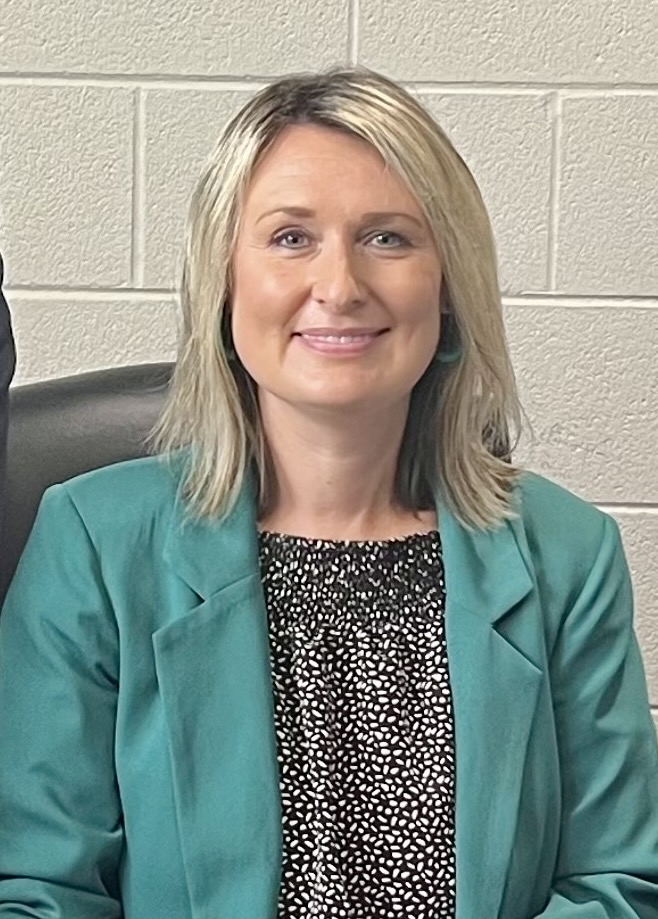
Tiffany Blazina
By Tiffany Blazina
tiffany.blazina@crittenden.kyschools.us
Picture it … my sweet little soccer player all decked out in her cleats, jersey and polka-dot soccer socks. As she eagerly awaited the first practice of her under 10 season, a dog caught her eye. Not just any dog. A dog that looked more like a come-to-life teddy bear than a dog.
The temptation to look at it and study its moves was too much. She was mesmerized. That is, until a loud voice came from the center of the field. “Mollie, are you staring at a dog?”
Embarrassed and red-faced, she spun around and said softly, “Yes.”
“Run a lap!” echoed the big voice almost instantaneously.
My first thoughts while watching from the sideline? My poor baby. She was just watching a dog! She’s 8! Who is this guy yelling at my little girl? He doesn’t know how shy she is, how humiliated that probably just made her feel. But, knowing that checking on her as she rounded the last corner of the field would probably make her even more embarrassed, I just sat there and smiled softly as she joined her teammates.
As practice went on that evening, a few other kids had to run for myriad reasons – running off the field to get more sunflower seeds, braiding another kid’s hair, and, of course, playing out of position. On the drive home, I asked Mollie how she felt practice went and what she thought of her new coach. She didn’t say much, just that it was “ok.”
“Just OK,” I thought, analyzing the situation from my teacher prerogative as much as through my mothering intuition. I concluded that she probably wouldn’t be as happy on this new team. After all, she was only 8, and this serious business of playing “in position” and learning plays and formations just seemed like a lot for a little girl who loved collecting Shopkins, watching YouTube videos, and – heaven forbid – looking at cute puppy dogs. I left it at that, though, and told myself that we would see how the next practice went.
Different day, same story. Only this time, no dog. Mollie strayed from her position while chasing down a ball and, you guessed it, had to run a lap. Again, though, she wasn’t the only one. At times, it looked almost as if you were watching a track meet. But somehow, in the midst of this organized chaos, it appeared they were beginning to really learn some things.
This group of seven boys and five girls started working together, communicating and passing the ball. They weren’t perfect; but they were improving. The first game approached. It was a close game, but they won! Next practice would be easier, right? Wrong! The kids were excited about their first big win and carried that conversation – and celebration – a bit over as practice began. This time, the whole team ran a lap.
Their coach told them it was a great win, but it was just a win, and the season had just begun. And so the practices continued. The coach’s style never wavered. My little Mollie ran laps just the same as the oldest boy on the team. She was expected to play in position just the same as him. When she fell on the field, she was told to “shake it off,” get up and get back in control. When she made a mistake, she came out. She listened to her coach’s explanation of what she did wrong and how she could avoid making that mistake when she next went out on the field.
Over the course of two months, I watched these kids come together and respect their coach – the guy who on the first night of practice made a few kids cry and a few others hide. I saw that gradually turn to respect and then to all-out love for this guy with a tough exterior but a heart of gold and a natural, uncanny ability for coaching.
I couldn’t help but think of the similarities to teaching. I asked myself, what did he do that caused him to be successful with these kids?
Well, he was fair. My little girl was treated no differently than the most rough-and-tumble boy on that field. When she messed up, she ran. When she fell down, she was told to brush it off and get back up. And she did.
He was consistent. They worked hard at practice. They stretched before every practice. They ran selective drills until they became so familiar with them, they could do them in their sleep!
He was demanding. He demanded their best and that’s what he got. It took a little while to get them in a routine, but soon they didn’t care if the world’s cutest dog was on the field or if some kid had a glow-in-the-dark ball on the next field. They were there to get better at soccer.
And lastly, he was genuine. He didn’t bring snacks and treats to win their affection. (In fact, most days he was sneaking sunflower seeds and Gatorade from the kids!) He won them over by being real with them. He told them when they did something wrong and he communicated their worth to them. He let them know he believed in them and knew they could do better the next time.
I think sometimes we could equate teaching to running practice drills or playing in a sporting event. It’s difficult to get – and keep – all students engaged, communicating and working toward a common goal. It takes patience, practice and perseverance.
Not every student is a visual learner. Not every student thrives on group work. And try as I may, not every student grasps the concept of similes and metaphors using one of my favorite ‘80s songs. Teaching is about risk-taking, re-doing and reflecting – not unlike coaching a youth sports team.
Speaking of that coach – he’s a 23-year-old unmarried man with no kids of his own (although he now refers to a dozen little boys and girls as “his kids.”) That little team – they went on to an undefeated season and the honor of being named fall soccer tournament first-place champs!
I learned some great lessons from the field through sharing that experience with my daughter. Like coaching, teaching isn’t for the faint of heart.
Tiffany Blazina Crittenden County is an instructional coach at Crittenden County Middle and High schools. She earned a bachelor’s in public relations and a master’s in middle school education from Murray State University. She also has earned a Rank 1 in curriculum and instruction from University of the Cumberlands.



Leave A Comment